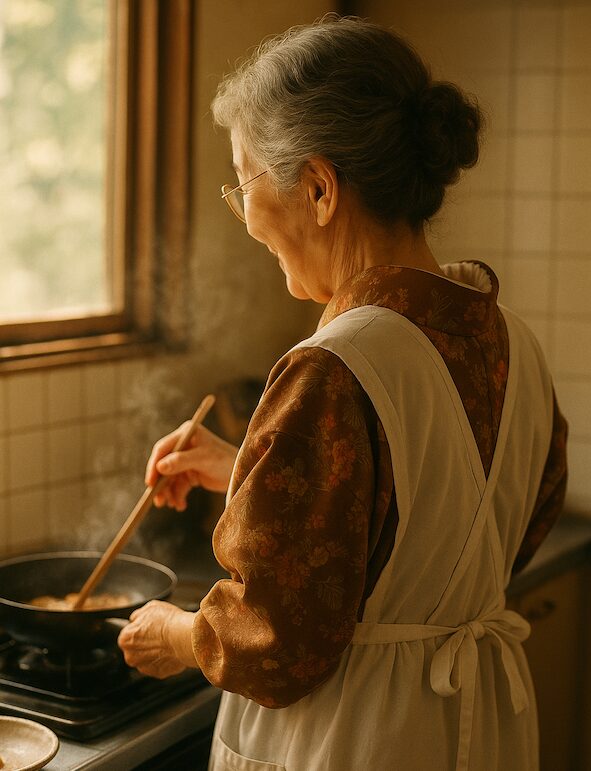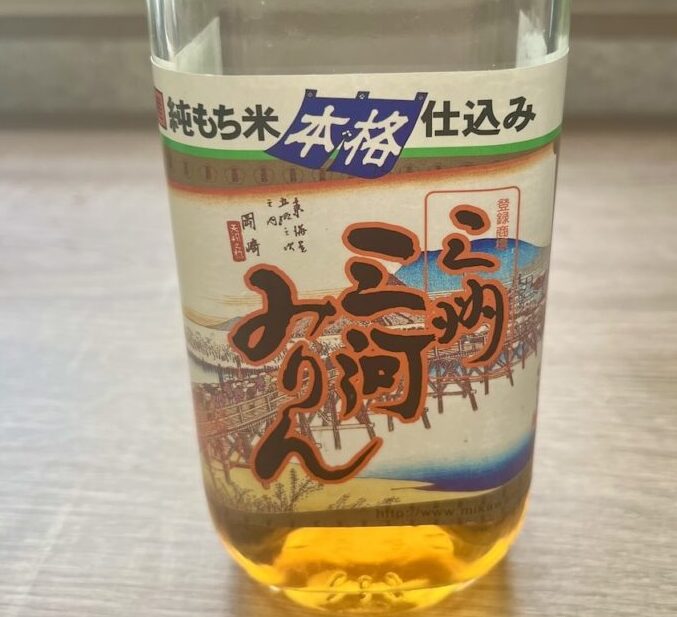Ever since I discovered Sanshu Mikawa Mirin, my appreciation for Japanese cuisine has grown deeper.
Maybe you’d call it a quiet support behind the scenes?
Hmm… not quite.
To me, it feels more like a quiet warmth—gently offered from the background.
It’s like something that brings out softness in both taste and heart—
and the more I cooked with it, the more I felt that quiet joy.
Mirin is often called an essential ingredient in Japanese cooking.
But to be honest, I never really understood why.
Why not just use sugar and sake instead?
Even when I used mirin, it didn’t seem to make much of a difference…
In fact, I sometimes preferred leaving it out altogether.
To me, mirin was just something I had in my pantry because I was Japanese.
That changed when I took a course on fermented foods.
I learned that mirin was originally a kind of luxurious sweet rice liquor—something people used to actually drink.
I remember thinking,
“What? People used to drink this stuff?”

Honestly (and I’m sorry to say this),
my first reaction was: “It can’t be that tasty, right?” 😅
But then I found out the truth.
What I had been using wasn’t real mirin at all—
it was actually mirin-style seasoning.
Even when a bottle says “hon-mirin” (real mirin),
some products turn out to have added sugars or artificial flavorings to create the sweetness.
And honestly, I found myself thinking,
“Wait… this still counts as hon-mirin?”
Real hon-mirin is made with just three ingredients:
glutinous rice, rice koji, and authentic shochu.
It is aged slowly for more than a year, and contains about 14% alcohol.
Under Japanese law, it’s actually classified as an alcoholic beverage.
In contrast, “mirin-style seasoning” is not considered sake.
It’s a processed seasoning made with sweeteners and additives designed to mimic real mirin.
The first time I used Sanshu Mikawa Mirin,
I felt the meaning of “hon-mirin” not in my head—but in my senses.
Yes, it does help dishes retain shape and absorb flavor.
Those are real, practical effects.
But there’s something more. Something deeper.
Of course, it makes food more delicious.
But beyond that—
I felt this warm, quiet reassurance.
Like something was gently holding me.
That sense of “being cared for by something real”
made me truly happy.
Mirin isn’t just sweet.
It’s modest, warm, reliable—
like a grandmother in a kappōgi apron, tasting a dish and smiling,
“Mm, that’s just right.”
That quiet, supportive presence—
that’s what mirin feels like to me.

Today, only a handful of makers still produce true, traditional mirin in Japan.
Let’s keep passing on the flavors of this beautiful culinary heritage.
And little by little, I’d love to share more about mirin from other breweries, too.
Behind every bottle of “seasoning” lies someone’s time, care, and tradition.
Just remembering that makes me feel more grateful for the meals in front of me each day.

Sanshu Mikawa Mirin is a genuine hon-mirin,
made only from glutinous rice, rice kōji, and authentic shōchū,
and aged slowly for over a year.
The brewery, Sumiya Bunjirō Shōten, was founded in 1910 (Meiji 43).
In 2025, they will celebrate their 115th year.
Even today, they continue to brew with a quiet dedication—
a gentle resolve to preserve what is real.
All the rice they use is grown in Japan.
On their official website, I came across a line that touched me deeply:
“By turning the carefully grown rice from our farmers into mirin,
we contribute to the preservation of rural landscapes and the environment.”
Now that I live abroad, I don’t have as many chances to enjoy Japanese rice.
But maybe that’s why—
each time I do, I feel an even deeper sense of gratitude.
It really is something delicious, and something to be grateful for.
So when I encountered this mirin—made slowly, with care and with respect for tradition—
I truly felt:
“More people deserve to know this flavor.”
If someone out there is cooking without ever having tried real hon-mirin, like I once did—
that feels like a missed opportunity.
I promise:
you won’t regret trying it.
In fact, it may gently change the atmosphere of your table,
softening it, warming it, quietly and kindly.
If you’d like to learn more,
please visit the official website of Sumiya Bunjirō Shōten.
Visit their website here.


